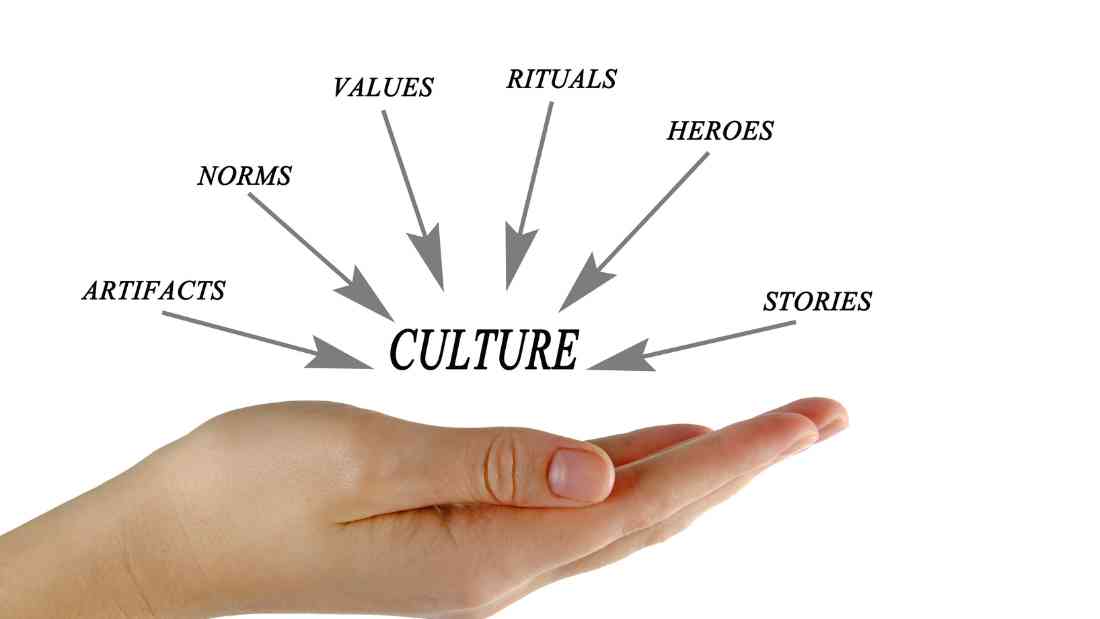What constitutes illness and health are constructs that vary depending on the cultural context in which they are experienced. By looking at various ethnographic examples from around the world we can show how these concepts are defined differently in various cultures and societies.
In this essay I will first discuss the definitions of illness and health, after which, using various ethnographic examples, I will illustrate how culture fills in the gaps when it comes to constructing our understanding of what constitutes illness and how this impacts our associated health-seeking behaviours.
In the second part of the essay, I will focus on two ethnographies of women in Haiti and Japan to illustrate the concept of culture-bound syndromes which are in fact a form of indirect and non-confrontational resistance against the pressures and restrictions put on the women by society and the injustices they face at home.

The Definition of Illness
For the scope of this essay, I shall be using the definition of illness as the
“innately human experience of symptoms and suffering. … how the sick person and the members of the family or wider social network perceive, live with, and respond to symptoms and disability”
(Kleinman 1988, p. 3)
– as opposed to disease, which is the medicalised interpretation of the signs and symptoms associated with the person’s condition, based on a particular medical taxonomy and leading to an official diagnosis by a practitioner (Kleinman 1988; Singer, Baer 2012; Young 1982).
One could condense the difference between illness and disease by saying that the former is the embodied experience and perception of the condition of the person who is struggling with the illness and the people around them, as opposed to the narrower perspective, stripped of personal and societal illness experience, of the health practitioner to whom they turn for treatment (Kleinman 1988; Singer, Baer 2012; Young 1982).

Thus, a person might get a diagnosis, and it is even possible that they will be prescribed medication to alleviate or cure their symptoms, but this does not necessarily mean that their illness will be resolved, for the illness has associated meanings that cannot be expunged by swallowing a pill or undergoing surgery.
Kleinman (1988, p. 22) describes these societal constructs of illness as an “exoskeleton” that forms around the person, changing the way that society perceives them, and potentially also how they perceive themselves.
To give an example, it is in this manner that a diagnosis of HIV transforms into the stigma of sexual deviancy or promiscuousness (Kleinman 1988).
A person interprets and experiences illness based on the systems of meaning inherent in their culture and formed through their own personal life experiences.
This is how they construct their explanatory model of illness (EM), which incorporates the cause and origin of their illness (aetiology), the pathophysiology (impact on bodily functions), the onset and type of symptoms, how society expects the sick person to behave (the sick role), and the treatment that is necessary to heal.
Thus, the illness experience and the explanatory model constructed for it are unique to each person, impacting their illness behaviours and the approach taken to seek treatment and return to health.
This is why the way we experience illness is culturally defined, as is our health-seeking behaviour (Kleinman 1988; Singer, Baer 2012; Young 1982).

The Definition of Health
Biomedicine defines health as the absence of disease (Singer 2004). This definition, however, does not take into consideration the issue of illness, which as described above encompasses several additional criteria relating to the perceptions and experiences of the person who is ill and the people around them.
The World Health Organisation (WHO) has recognized the reductionist nature of the biomedical definition of health, so it has expanded the definition to include both the absence of disease and the physiological and psychological wellbeing of the individual (Brown, Barrett, Padilla, Finley 2010).
The problem with this definition, of course, is that wellbeing is a very culturally loaded term because it can mean totally different things in different cultures.
A good example that illustrates this issue is the interpretation of a thin body in the US (healthy, attractive) as opposed to Africa (unhealthy, malnourished) (Brown et all 2010; Singer 2004; Singer, Baer 2012).

The abovementioned example leads us to a definition proposed by a branch of Medical Anthropologists focusing on Critical Medical Anthropology, which includes the political and economic circumstances of the individual in question.
For of course, the difference in interpretation of a thin body does not depend solely on culturally defined criteria, but also on the economic reality on the ground.
After all, if people are seriously malnourished or starving there is no way that a thin body can be an indicator of good health (Singer 2004).
Proponents of Critical Medical Anthropology point out that wellbeing depends on a much wider range of criteria than was recognised in the WHO definition, and that true wellbeing cannot be achieved if people are struggling with issues such as social inequality, class, gender, racial and other forms of discrimination, and poverty (Singer 2004).
Thus, they define health as having the resources to live “life at a high level of satisfaction” (Singer, Baer 2012, p. 78).

Explanatory Models and the “Work of Culture”
“The work of culture is the process whereby painful motives and affects such as those occurring in depression are transformed into publicly accepted sets of meanings and symbols.
Thus the constellation of affects that I talked of earlier can, through the work of culture, be transformed in a variety of directions – into Buddhism and into spirit attack and no doubt into other symbolic forms also.” (Obeyesekere 1985, pp. 147 – 148).

Causes of Disease
At the very core of a person’s EM is their belief regarding the cause of their illness. This becomes the foundation on which they construct the interpretation of their symptoms and their health-seeking behaviour.
The Bedouin tribes of the Negev, for example, attribute many types of sickness (such as problems in pregnancy) to the evil eye (known as ‘ayn’ in Arabic).
In these fellahin societies, the evil eye can emanate either from an envious person (insija) or from evil spirits known as jinns (jinniyah).
Given these supernatural causes of illness, whenever members of these tribes feel unwell, they use amulets, incantations and spells to disperse the evil forces that are afflicting them (Abu-Rabia 2005).
In India, on the other hand, many illnesses are attributed to pollution – a view that is rooted in culturally defined ways of understanding the body and bodily functions.
A person who touches a menstruating woman, for example, is perceived to be ill, because it is believed that the menstrual blood is transferred from the pores of the woman to the pores of the other person, thus polluting them internally (Shweder as cited Kleinman, 1988 p. 12).
In this case, healing would require a ritual of purification.

Different Interpretations of the Same Symptoms
Furthermore, the very same symptoms that are experienced as an illness in one culture can be interpreted in a totally different manner in another (Kleinman 1988; Obeyesekere 1985).
Obeyesekere illustrates this phenomenon by comparing the different significance given to the constellation of symptoms recognised as “depressive affects” (p. 145) in the West, where they are grouped together and collectively diagnosed as “depression” as per the Diagnostic and Statistical Manual of Mental Disorders published by the American Psychiatric Association, to the totally different way that such symptoms are understood in societies such as the Ashanti or the Yoruba.
In the case of the Ashanti, this “type of a depression seems, in fact, not to be thought of as an illness but accepted as the inevitable lot of most women” (Krause 1968 cited in Obeyesekere 1985, p. 135).
Similarly, for the Yoruba, “while the symptoms were recognized as painful, unpleasant and disabling, they were seen as more or less ‘natural’ results of the vicissitudes of life” (Murphy cited in Obeyesekere 1985, p. 135).

Obeyesekere extends the argument by explaining that the feelings and behaviours which are collectively termed “depression” in the West, manifest as religiosity in Buddhist cultures.
One of the main tenets of Buddhism is the impermanent and illusory nature of man’s existence, and on special holy days devout Buddhists participate in a series of religious activities which include meditation on revulsion,” where the person’s “pain of mind and sorrow” is “articulated in Buddhist terms and expressed in the activity of sil and meditation” (Obeyesekere 1985, p. 143).
The author tells us that in the Sinhalese language, terminology that is related to despair, pain or sorrow is derived from Buddhism and is inextricably linked to religious devotion. Similarly, Sinhalese mythology and morality tales are all linked to the sorrow of existence and the inevitability of death.
These themes are so important in Sinhalese Buddhist culture that those who have not yet suffered such pain are actively encouraged to meditate on sorrow and death “as a step in the larger quest for understanding the world” (Obeyesekere 1985, p. 145).
Thus, the symptoms of what would be called “depression” in the West are conceived in a totally different manner and are not experienced as illness but rather as Buddhist enlightenment.

This aligns with the findings of Kleinman (1998, p. 27), who states that –
“culture fills the space between the immediate embodiment of sickness as physiological process and its mediated (and therefore meaning-laden) experience as human phenomenon.”
As an example, he mentions the rise in chronic pain complaints that are routinely made by North Americans seeking treatment, commenting that in their culture the expectation has now become that life should be totally pain free.
He contrasts this with people in the developing world, who accept the reality
“that pain is an expectable component of living and must be endured in silence” (p. 23).
The author also shares other examples, including menopause, which is framed as an illness in the Western world but is viewed as a natural stage of life in many other cultures (p. 24).

Different Health-Seeking Behaviours
As already mentioned, the health-seeking behaviours of people who are unwell are closely linked to other aspects of their EM, such as their understanding regarding the cause of their illness and their interpretation of their symptoms.
Thus it is, for example, that many people in Iran who are struggling with depression or anxiety, and who attribute their condition to an evil spirit called a bād, seek treatment from a māmā or a bābā, who are Zār practitioners with the required experience to assess whether the Zār healing ritual can help them (Mianji, Semnani 2015).

During the ritual the ill person lies on the floor in the centre of the room, with a cloth placed over his or her head.
To identify exactly which bād they are dealing with, the Zār practitioner begins chanting and altering the music’s rhythm until the patient begins to twitch.
When this happens, the other ritual participants begin to dance in an uncontrolled frenzy, taken over by evil spirits (Mianji, Semnani 2015).
The bād that has possessed the ill person then makes its demands, which are usually something that the afflicted person would not have been able to ask for under “normal” circumstances, but which are acceptable in the liminal stage created by the Zār ritual, when social rules are put on hold (Beeman 2018; Mianji, Semnani 2015; Van Gennep 1960).
The request is then satisfied, and the affliction is alleviated. The person then emerges from the ritual with their needs satisfied, and they reintegrate into society, once more complying with societal expectations and norms.

Illness as Resistance
I will now be looking at illness through the lens of resistance, with a particular focus on how illness manifests in women (both consciously and potentially also subconsciously) as resistance to the domination that they are subjected to in their everyday lives.
I will be referring to ethnographies examining two different culture-bound syndromes: (1) move san in rural Haiti (Farmer 1988); and (2) futeishūso experienced by Japanese women (Lock 1987).
The main premise of both these ethnographies hinges on the somatization of psychological distress in the form of (apparently unrelated) physical and psychological symptoms, most likely resulting from the fact that these women live in societies where they are under pressure not to confront the source of their distress directly.
In both societies, these women are victims of tactical or organisational power, defined by Eric Wolf (1990) as the typology of power that controls the opportunities and resources available to specific groups, in this case women, in a community.
In both cases, organisational power is being brought to bear upon women both at a societal level and in the micro-relations of everyday life, meaning that they are experiencing multiple levels of domination.
I will also be looking at differences between the two cases, focusing on the fact that while the explanatory models (EMs) used by the women in both societies to describe and justify the illness in question align, there are major differences in the resulting health-seeking behaviours and the EMs of health practitioners they resort to for relief of their symptoms.
Furthermore, I will also show that in some cases, the women’s treatment choices lead to them experiencing a stage of liminality, followed by reintegration into society, in much the same way as the Zār ritual mentioned above.

Ethnography of Haitian Women suffering from Move San in Do Kay
Move san is a condition that mainly afflicts women, particularly when they are in a vulnerable stage of their life, such as when they are pregnant or breastfeeding their children.
The illness is triggered by an event that causes the woman serious emotional distress, such as domestic violence or infidelity on the part of her partner.
The EM of the healer who creates the herbal remedies for this illness is that
“If you are deceived, cheated, cuckolded, ostracized, or frightened, you must beware of move san. It can happen in a short amount of time; within a week you’re very ill”
(Farmer 1988, p. 71)
The word move san translates to “bad blood,” which is an accurate description of the way that Haitians conceive this illness.
When a woman experiences a shock or is abused in some manner, her blood becomes infected, infecting all her organs as the blood flows through the body.
The bad blood can lead to a miscarriage in a pregnant woman and the spoiling of breast milk in a nursing mother.
To understand this illness, one must consider the realities faced by the women of Do Kay, who are the victims of multiple levels of organisational power.

A few years before the ethnography was conducted, the village was displaced because a decision was taken at government level to build a dam in the valley.
This involved flooding the village and the entire community lost their homes and land, but were not compensated.
This led to them falling into extreme poverty, and many of the women found themselves needing to work outside the home to make ends meet, making it extremely difficult for them to nurse their babies.
The desperation experienced by the entire community and the sudden shift in gender roles as women left the home to work led to an increase of domestic violence, forming the background to the sudden epidemic of move san (Farmer 1988).
Move san is thus a somatization of the women’s distress, and a form of resistance against the domination that the women are experiencing, both from the State and within their homes.
By announcing that she has move san, a woman is effectively protesting about being mistreated, without engaging in direct confrontation with the parties responsible, which would be frowned upon by society.
She therefore shines a light on the abuse through her illness and creates an obligation on the entire community to protect her from further mistreatment.
Furthermore, she is also creating a pretext for weaning her child early, which had previously been considered mistreatment of the baby, but which is now essential given the fact that the mother needs to go to work (Farmer 1988).
Ethnography of Japanese Women suffering from futeishūso
Japanese culture prioritises societal harmony, predicating that the needs of the individual should be put aside in the interest of the community.
Women are thus under considerable pressure to “dissolve the personal and honor the public (messhi hōkō)” (Harootunian 1974 cited in Lock 1987, p. 118), by never engaging in direct confrontation with others.
They are also socialized to act according to the principles of tatemae (socially acceptable behaviour) and not to indulge their hone (their personal needs and wants) (Lock 1987, p. 122).

Japanese women are subject to various forms of domination.
Society dictates that they should be submissive, and they are judged primarily based on whether they are a “good wife and wise mother” (Lock, p. 128).
They are subject to organisational power (Wolf 1990), since culture dictates that after marriage they should not work outside the home, however educated or skilled they may be.
And finally, they are also expected to be subservient to their husbands, as in the case of college-educated Mrs Morita, whose husband beats her, and yet must make sure that a hot meal is ready as soon as her husband returns from work, which is usually around ten o’clock at night (Lock, p. 134).
Lock tells us that resistance to the homogenizing power experienced by the Japanese comes in two forms – (1) retreatism, which involves separating oneself from society, or (2) ritualism, where the person internalizes their resistance, while acting as though they are totally in harmony with society (Lock 1987, p. 119).
The women’s resistance thus emerges as futeishūso, a constellation of nonspecific symptoms that medical practitioners diagnose as “chronic infectious pelvic disease” (Lock, p. 126), which everyone understands, but never acknowledges publicly, is a euphemism for an illness emerging out of loneliness, boredom and the inability to achieve any form of self-actualisation.
When a woman succumbs to this culture-bound syndrome of symptoms, she receives support from her family and the community, and she is often hospitalized for extended periods of time, in some cases for up to two months.
While they are in hospital, they go through a liminal phase where they can discuss their feelings and life circumstances with their doctor, finally emerging two months later and reintegrating in society after “healing.”
A Comparison of the Two Ethnographies
Similarities
In both cases the women are the victims of multiple levels of organisational power (Wolf 1990).
The Haitian women lost their homes and became desperately poor through the actions of the State, and in some cases, they are also victims of domestic violence.
The Japanese women, on the other hand, are forced to be submissive and are victimised by society and their husbands.
Both the Haitian and Japanese women have been socialised to avoid direct confrontation, so their illness is a somatization of emotional and psychological distress, publicly declaring their emotional distress in a socially acceptable form.
To heal, the women go through a rite of passage, starting off as ill, then entering a liminal stage where they receive treatment and get lots of attention, after which they emerge and re-integrate within society.
Differences
The circumstances of the women, however, are very different.
In the case of Haiti the women are poor and have to work outside the home, even though this interferes with the way they would like to raise their children.
In the case of Japan, on the other hand, the women are financially stable and, in most cases, do not work outside the home, even should they want to do so
Furthermore, while both the Japanese and the Haitian women acknowledge that the source of their illness is emotional or psychological, their health-seeking behaviour differs.
The Japanese refer to a biomedical doctor and receive treatment for their physical symptoms, while the Haitian women are more likely to initially seek assistance from a local healer, who conducts a ritual to purify their blood.
Conclusion
In conclusion, this essay has shown that the interpretations of illness and health are culturally defined and are incorporated in the EM of the ill person, as well as the EMs of the people they interact with, including the health practitioners they resort to.
These EMs construct their understanding of the causes of their illness, the definition of their symptoms, and very importantly, their health-seeking behaviour.
Thus, we see that a Buddhist in Sri Lanka would view their depressive symptoms as proof of their piety and would not seek any treatment, while a person in the West would view them as symptoms of a disease and would go to the doctor to ask for medication.
We have also seen that illness can be a somatization of emotional and psychological distress, enabling people who are not able to confront the causes of their illness for culturally specific reasons to seek treatment to alleviate their suffering.
In these cases the health-seeking behaviours of the people in question enable them to break free of the restrictive bonds placed on them by their culture to ask for what they want, as happens during the Zār ritual, request support and protection when vulnerable, as done by Haitian women in the guise of move san, or extract themselves for an extended period of time from their loneliness and aimlessness, as done by Japanese women who succumb to futeishūso.
References
Abu-Rabia, A. (2005) “The Evil Eye and Cultural Beliefs among the Bedouin Tribes of the Negev, Middle East.” Folklore, 116(3), pp. 241-254.
Farmer, P. (1988) “Bad Blood, Spoiled Milk: Bodily Fluids as Moral Barometers in Rural Haiti.” American Ethnologist, Vol. 15, No. 1, Medical Anthropology, pp. 62-83.
Beeman, W.O. (2018) “Understanding the Zār: An African-Iranian Healing Dance Ritual.” Anthropology of the Middle East, 13(1), pp. 69.
Brown, P., Barrett, R., Padilla, M. and Finley, E. (2010) “Medical Anthropology: An Introduction to the Fields” in P. Brown and R. Barrett (eds.), Understanding and Applying Medical Anthropology. Toronto: McGraw Hill, pp. 3-15.
Gennep, A.V. (1960) The Rites of Passage. Phoenix.
Kleinman, A. (1988). The Illness Narratives: Suffering, Healing & the Human Condition. New York: Basic Books, pp.3-30.
Lock, M. (1987) “Protests of a Good Wife and Wise Mother: The Medicalization of Distress in Japan.” Health, Illness, and Medical Care in Japan: Cultural and Social Dimensions, pp.130-157.
Mianji, F. and Semnani, Y. (2015) “Zār Spirit Possession in Iran and African Countries: Group Distress, Culture-Bound Syndrome or Cultural Concept of Distress?” Iranian Journal of Psychiatry, 10(4), pp. 225-232.
Obeyesekere, G. (1985) “Depression, Buddhism, and the Work of Culture in Sri Lanka.” In Kleinman, A. and Good, B. (eds). Culture and Depression: Studies in the Anthropology and Cross-Cultural Psychiatry of Affect and Disorder. Berkeley: University of California Press, pp. 134-152.
Singer, M., Baer, H. (2012). Introducing Medical Anthropology: A Discipline in Action. AltaMira Press: Lanham.
Singer, M. (2004). “Critical Medical Anthropology.” In: Ember, C.R., Ember, M. (eds) Encyclopedia of Medical Anthropology. Springer: Boston, MA.
Wolf, E.R. (1990) “Facing Power – Old Insights, New Questions.” In Vincent J. (ed.) The Anthropology of Politics. Blackwell Publishers, Oxford, pp. 222 – 233.
Young, A. (1982). “The Anthropologies of Illness and Sickness.” Annual Review of Anthropology, 11, pp. 257-285.

